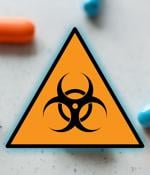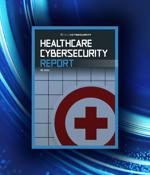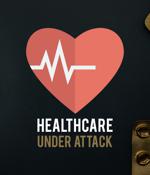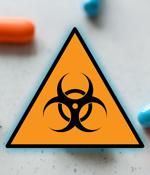Security News

Protected Harbor announced the launch of its latest whitepaper on healthcare cybersecurity which offers readers an insight into evolving healthcare data breach patterns, predictive threats for 2022, and a playbook on how to increase IT durability to stop future healthcare data attacks. "Due to the financial value of patient health information, electronic health records stored in healthcare organizations are a major target for cybercriminals," said Richard Luna, CEO of Protected Harbor.

Help Net Security: Healthcare Cybersecurity Report has been releasedOur newest report takes a closer look at one of the most targeted industries today - healthcare. Cyber attacks on Ukraine: DDoS, new data wiper, cloned websites, and Cyclops BlinkRussia started its invasion on Ukraine and, as predicted, the attacks in the physical world have been preceded and accompanied by cyber attacks.

Our newest report takes a closer look at one of the most targeted industries today - healthcare. As exhausted healthcare professionals struggle with an extraordinary situation, their IT departments face critical skills and staffing shortages.

The FritzFrog botnet that's been active for more than two years has resurfaced with an alarming infection rate, growing ten times in just a month of hitting healthcare, education, and government systems with an exposed SSH server. Researchers at internet security company Akamai spotted a new version of the FritzFrog malware, which comes with interesting new functions, like using the Tor proxy chain.

A peer-to-peer Golang botnet has resurfaced after more than a year to compromise servers belonging to entities in the healthcare, education, and government sectors within a span of a month, infecting a total of 1,500 hosts. Dubbed FritzFrog, "The decentralized botnet targets any device that exposes an SSH server - cloud instances, data center servers, routers, etc. - and is capable of running any malicious payload on infected nodes," Akamai researchers said in a report shared with The Hacker News.

Kaspersky: Many wearables and healthcare devices are open to attack due to vulnerable data transfer protocol. Kaspersky security researchers announced this week that a popular data transfer protocol used by healthcare devices is full of critical vulnerabilities.

Ransomware was the most common attack method behind third-party breaches in 2021, initiating more than one out of four incidents analyzed. Despite immense cybersecurity improvements following the onset of the COVID-19 pandemic, the healthcare industry was the most common victim of attacks caused by third parties, accounting for 33% of incidents last year.

43% of the growth will originate from North America for the healthcare fraud detection market. Market growth in North America will be faster than the growth of the market in other regions.

This week's announcement by Florida's Broward Health System that the most intimate medical data of 1,357,879 of its patients was breached in the fall should serve as a warning that the healthcare software supply chain will be a juicy target for cybercriminals as we head into 2022, researchers warn. As startling as the number of impacted Broward patients may seem, Ron Bradley, vice president of Shared Assessments calls this breach, "Just a drop in the proverbial bucket related to healthcare losses in 2021.".

The global healthcare cloud infrastructure market size is expected to reach $142 billion by 2028, according to ResearchAndMarkets. The growing trend of healthcare digitalization, rising expenditures, overburdened health systems, rising traffic on the network, growing data siloes, and the emergence of remote working is contributing to the demand for healthcare cloud infrastructure systems and solutions.